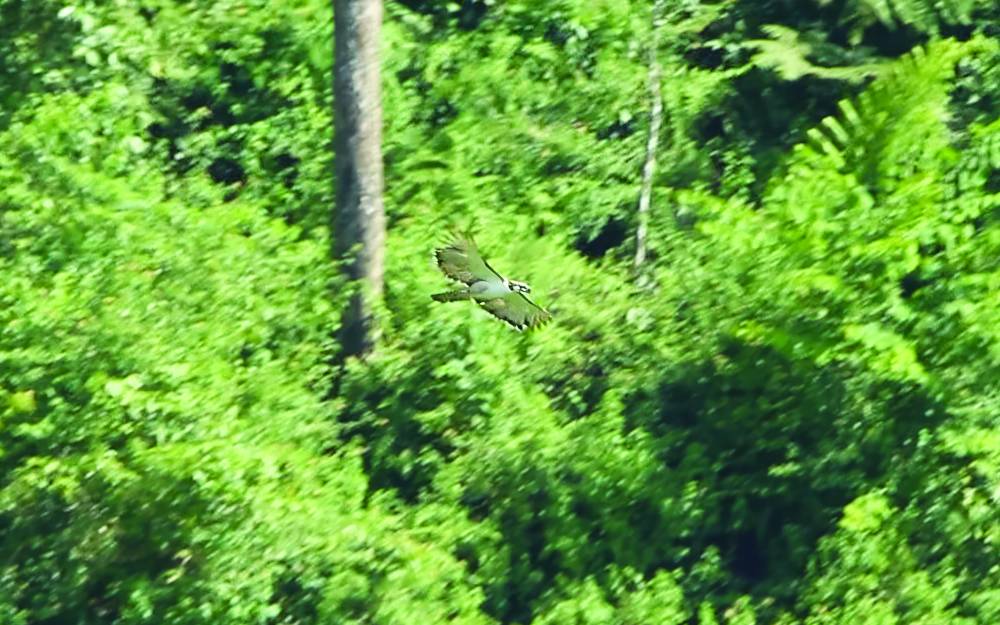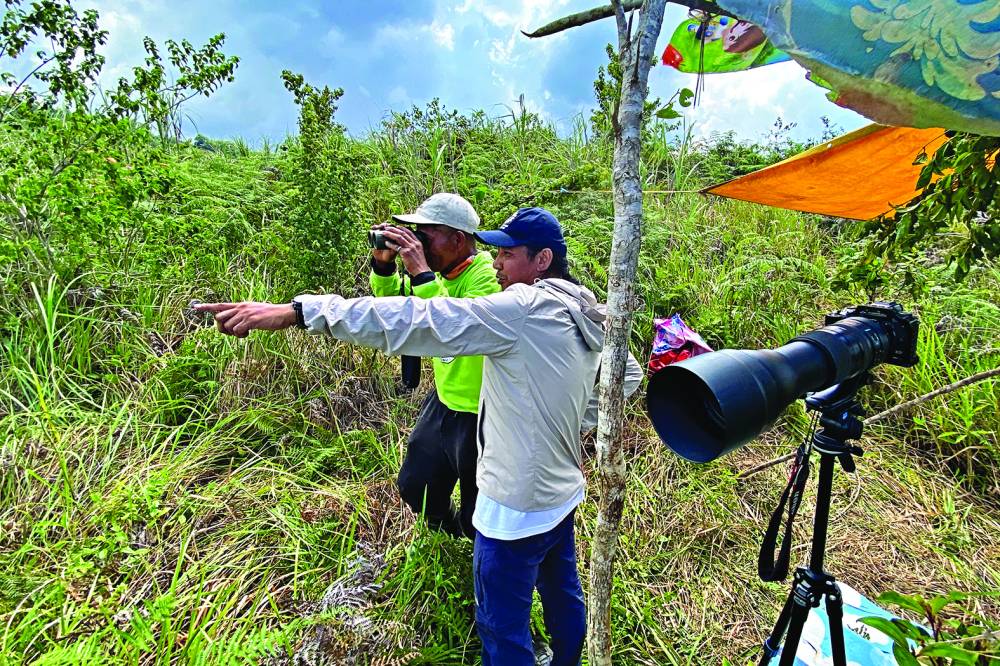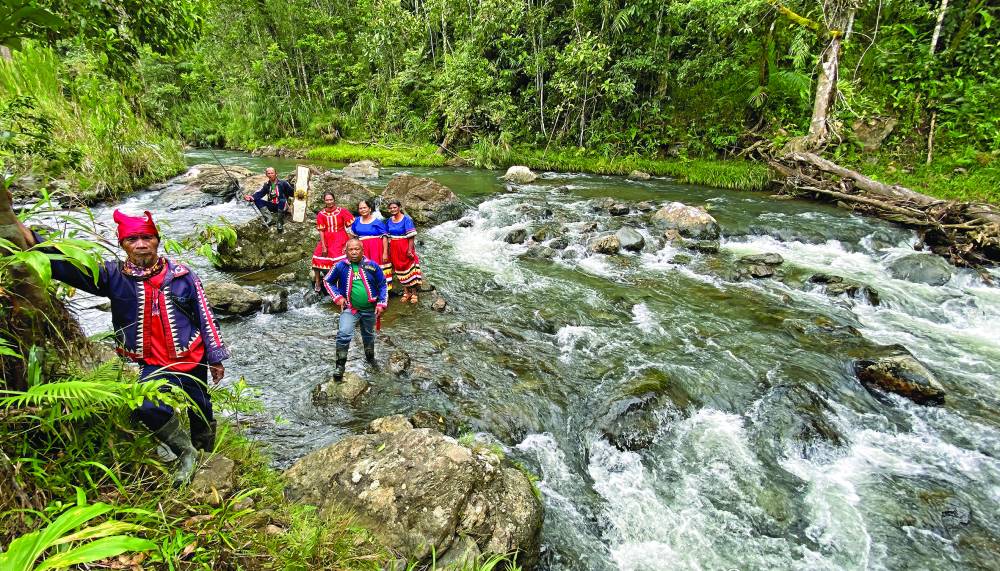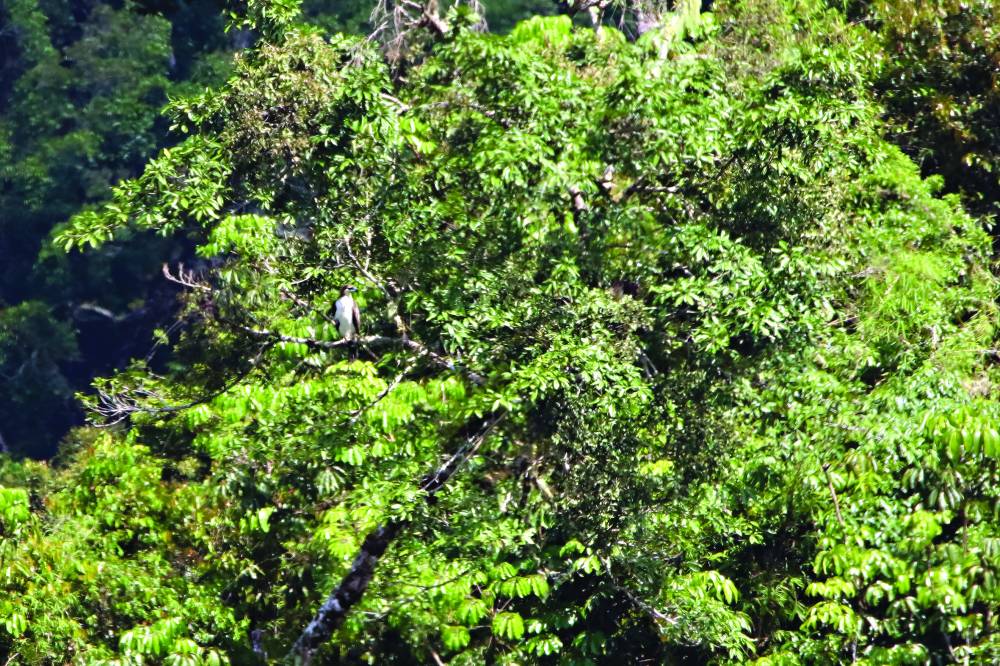Eagles thrive in forests guarded by Bukidnon tribe

But even before they could warm their seats, they were greeted with an interesting development.“I have big news, it’s a surprise I have been waiting to tell you for weeks. We saw a smaller Philippine eagle together with its parents,” Datu Honorio Sumohoy, local tribal chief and head of the Guilang-guilang Apo Datu Nanikunan Association Inc. (Gadnai), said.
An enthusiastic Sumohoy then asked the PEF team to immediately visit the area where he had been observing the eagles several times over the past few weeks.

“Back in December [2022], I already had an inkling of this after we had several reports of chicken, piglet and even a dog that had been snatched. For me, it was a sign that it was not their (eagle pair) usual diet and that something was off, so we went searching for the nest because deep inside I can feel that the eagles needed extra [food] to feed a new chick,” Sumohoy explained.
For the community, the new eaglet is a sign of a blessing especially after the tribe’s annual ritual of thanksgiving in March as their tradition and customary beliefs point to the Philippine eagle (Pithecophaga jefferyi) as where the spirit of their great tribal chieftain Apo Nanikunan resides.
Since the first discovery of a Philippine eagle pair in Manolo Fortich in 1995 by a team from the PEF, the town and its nearby mountain communities have been a prime interest for forest conservation.
Some 28 years later, the conservation program has borne fruit as a year-old eaglet opened its wings and slowly followed its parent who was teaching it to soar above the forest.
Milestone
“This is a milestone for the wildlife conservation program because this is the second validated and alive young Philippine eagle produced by Philippine eagle ‘Kalabugao,’” said Jayson Ibañez, the PEF director for research and conservation, in a recent interview.
In 2008, the PEF team rescued a sick Kalabugao from its captor in Bukidnon when it was just a year old. A year later in 2009, after the bird was rehabilitated, it was fitted with a GPS (global positioning system) tracker and released on Mt. Kitanglad.
With the aid of the GPS tracker, the PEF monitored and recorded Kalabugao’s six-month journey from Mt. Kitanglad to Mt. Tago in Manolo Fortich town in 2010, through the Kulaman and Mangima river systems.

In 2011, Kalabugao stayed in the forests of Guhian and Guilang, until scientists lost track of her as she ripped off the GPS tracker.
In 2016, Kalabugao was caught by a farmer, briefly rehabilitated at the Philippine Eagle Center, and released back to the forests of Manolo Fortich. Later, she paired with a male named “Gilang-gilang” then laid her first egg which failed to hatch, recalled Ibañez.
The hatching of Kalabugao’s second egg in 2017 was documented by a United Kingdom-based film outfit and Netflix. The eaglet was named “Maluko.”
A third egg was nested after Maluko left the couple in 2020 but this again failed to hatch. The new eagle that Sumohoy and the community had observed in Guilang-guilang, according to Ibañez, could be from Kalabugao’s fourth nesting and second successful hatch.
He estimated that the eaglet was hatched on Jan. 26 this year. The tribal community wants to name the eagle “Kapulinagan,” after a sacred hill where the Gadnai community is reforesting and planting new trees.
The PEF hopes to trap and capture the eaglet and its parents to attach a GPS tracker to better monitor them in the wild.
Kalabugao’s second offspring means that if conservation work is provided with enough support, “indigenous communities can save not only the Philippine eagle but also the entire forest ecosystem,” said Ibañez.
Culture-based conservation
For the tribe, protecting the wildlife in the area, especially the Philippine eagle, is a foremost responsibility. They believe that the spirits of those who had passed away now live in the animals found in the area, and that of their deceased tribal leaders now reside in the great eagle.
“Anyone who kills the eagle will also surely die; that is what we believe in. Hence, for our people, killing the eagle is against our culture, we abhor killing our sacred animals,” Sumohoy said.
“We allow hunting but only in an area designated for hunting. For the animals, the forest, the river, the land is not ours to just take, it is given to us to protect and hopefully to pass on to our children and then our grandchildren for them to inherit and enjoy its fruits,” Sumohoy said.

He pointed out their need for more support as efforts to patrol the area takes away their time from their small farms.
“Most of our forest guards hike and climb for several kilometers to monitor and check the ground for poachers and illegal loggers that might venture into our ancestral land,” said Sumohoy.
According to the PEF, all the 16 Philippine eagle pairs discovered in Bukidnon thrived in forests protected by tribal communities, including two new territories discovered in the last two years, with the latest pair nesting site discovered in San Fernando town.
“We’ve been monitoring young eagles being produced from several of these nesting sites. The first Philippine eagle that was monitored in Bukidnon is the pair in Dalwangan discovered in 1987. Since then, the nesting territories are producing eaglets, including a recent eaglet that again hatched in Dalwangan, Malaybalay City, last February,” said Ibañez.
The best way to protect these forests, he said, is by empowering indigenous peoples communities as conservation perfectly rhymes with their existing cultural practices.
“What we saw with how lush the forest area where the Philippine eagle resides was a huge indicator that culture-based conservation works. The IP (indigenous peoples) forest guards that we helped train and empower ensured that the forest remained secured and protected. We hope that we can find ways to help this community through sustainable livelihood with the socioeconomic enterprise we help organize,” Ibañez added.
More species
During the wildlife monitoring visit on April 26, a total of six raptor species were recorded to be thriving in the area together with the Philippine eagles.
These are Brahminy Kite (Haliastur indus), Philippine Honey Buzzard (Pernis steerei), Oriental Honey Buzzard (Pernis ptilorhynchus), Philippine Serpent Eagle (Spilornis holospilus), Pied Harrier (Circus melanoleucos) and the rare Rufous-Bellied Eagle (Lophotriorchis kienerii). The critically endangered Mindanao-endemic Writhed Hornbill (Rhabdotorrhinus leucocephalus), also known as the Mindanao wrinkled hornbill, was also seen in the Guilang-guilang forest.
“What’s also remarkable is we saw other species of raptors, indicating that the area has an abundance of prey that supports an entire ecosystem, having all seven raptor species with other big and smaller birds together with all the other wildlife in the area is a success story of its own,” Ibañez noted.
“I hope we can continue to help the community as they are the ones protecting the forest in the area,” he added. INQ
















